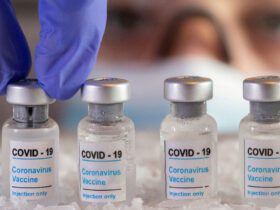According to experts, drug-resistant pathogens killed about 1.3 million people in 2019 – more than HIV or malaria combined.
According to scientists, antibiotic-resistant bacterial infections were also thought to have contributed to 4.95 million fatalities in the same year.
The study’s results, supported by the UK government and the Bill & Melinda Gates Foundation, were published on Wednesday in the peer-reviewed medical journal The Lancet.
The World Health Organization has identified antibiotic resistance as one of the most severe challenges that affect public health, food security, and development. However, human and animal antibiotic overuse is hastening the process.
Antibiotics are sometimes required to treat or inhibit bacterial illnesses.
However, the abuse and misuse of antibiotics, such as in the treatment of viral diseases such as colds, for which they are ineffective, has enabled certain bacteria to acquire resistance to them.
This resistance jeopardizes doctors’ capacity to treat common ailments, resulting in more significant medical expenses, extended hospitalization, and higher death rates.
According to the Centers for Disease Control and Prevention, more than 2.8 million antibiotic-resistant illnesses occur in the United States each year, with more than 35,000 people who die as a consequence.
A rising variety of diseases, including pneumonia, TB, and gonorrhea, are becoming harder to treat as medications become less efficient in combating the microorganisms that cause them.
Initial Global Estimates
The research reviewed data from current studies, hospitals, and other sources and 471 million individual records from 204 nations and territories.
Its estimations were based on the number of fatalities caused by and related to bacterial AMR(bacterial antimicrobial resistance ) for 23 pathogens and 88 pathogen-drug combinations.
According to the study, lower respiratory infections, such as pneumonia, were the most challenging infectious condition associated with bacterial AMR.
The second most common drug-resistant disorders that caused mortality in 2019 were bloodstream infections and intra-abdominal infections.
Together, these three disorders accounted for over 80% of AMR-related fatalities.
MRSA with E.coli
The research discovered that E. coli and MRSA (methicillin-resistant Staphylococcus aureus) were among the drug-resistant bacteria that caused the most fatalities.
Researchers discovered that the so-called superbug MRSA was directly responsible for more than 100,000 fatalities over the study period.
According to the authors, the six bacteria identified in the study as causing the most AMR fatalities have been designated as ‘priority pathogens’ by the WHO.
According to the report, drug-resistant bacteria were responsible for 16.4 fatalities per 100,000 people worldwide in 2019.
That rate jumped to 27.3 per 100,000 fatalities in western Sub-Saharan Africa, where AMR accounted for the most significant mortality worldwide.
Meanwhile, fatalities linked with but not directly caused by bacterial AMR accounted for 64 fatalities out of every 100,000 in 2019, according to researchers.
“Our findings clearly show that drug resistance in each of these leading pathogens is a major global health threat that warrants more attention, funding, capacity building, research and development, and pathogen-specific priority setting from the broader global health community,” noted by the author.
Antibiotic Investment is Deemed ‘Critical’
To address the danger presented by drug-resistant bacteria, the study’s authors advocated for specific intervention techniques, many of which were tied to antibiotic usage.
Reducing human exposure to antibiotics in meat, eliminating needless antibiotic usage — for example, in treating viral illnesses — and preventing the need for antibiotics via immunization programs and vaccine research were among the suggestions offered in the report.
Researchers also said that it is “critical” to continue investing in the development of new antibiotics.
“In the past few decades, investments have been small compared with those in other public health issues with similar or less impact,” they noticed.
The study’s authors stated that their analysis had certain flaws, including a lack of data from low- and middle-income nations, which might contribute to underestimating the AMR incidence in some locations.
The report’s authors said that efforts to expand laboratory facilities are critical to tackling AMR’s vast burden by enhancing individual patient treatment and data quality in local and global detection.
It is compulsory to identify measures that may help minimize the impact of bacterial AMR.











Leave a Reply